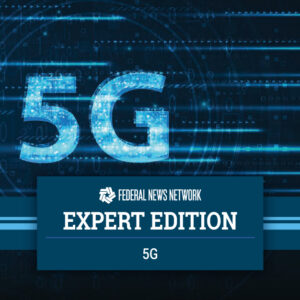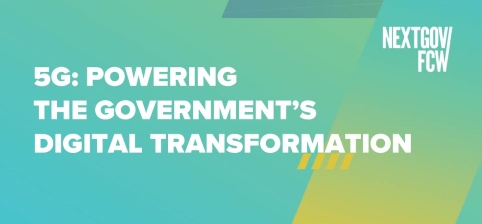Over the last several years, the discussion around 5G moved from hope and planning to pilots and test beds. Now agencies and industry are on the cusp of a 5G reality. Agencies already are spending billions of dollars on these 5G tests and now the Federal Communications Commission and others are providing more money to further roll out 5G infrastructure. Taken altogether, 5G is close to that tipping point where a technology become ubiquitous. The FCC has allocated $9 billion to roll out 5G infrastructure across rural America. Meanwhile, the Defense Department and the Coast Guard already are seeing the benefits of 5G to servicemembers. Hear from leaders at DoD, the Coast Guard, FCC and CISA on how 5G can bring new capabilities and innovations that allow agency personnel to experience data, training and operations in ways not possible before in the latest Federal News Network Expert Edition report.
Enterprise-Grade Security Is Vital for Secure 5G Infrastructure
“Top of mind regarding 5G benefits is security. To be fair, 5G also comes with its own risks: The rapid proliferation of endpoint devices enabled by 5G means a massive expansion of the threat surface. And because most of those devices are mobile or sensors, they’re not secure to begin with. But 5G also enables the solution to these problems. For one thing, it adds heightened authentication, which is important because the biggest vulnerability to a network is the user. Users can add malicious software to devices, which can access data they’re not supposed to or influence the way the network operates.”
Read more insights from Palo Alto’s Senior Systems Engineering Specialist for 5G and Mobility, Bryan Wenger.
How DoD, IC Can Adopt Commercial Tech in the Mission Space Through Industry Co-Innovation
“From an operational perspective, technologies like 5G are going to exponentially increase the amount of data available within the enterprise, because nearly anything can become a sensor. That means, for example, in the area of contested logistics, the DoD will be able to have greater understanding and visibility into its supply chain nodes. More accurate inventory and consumption levels will provide better insight into the demand signal and allow for automation through a logistics system. It’s a smart depot all the way down to the individual soldier, but this makes it all the more critical to properly manage this data. This is an area where commercial technologies are well established and proven to work.”
Read more insights from SAP NS2’s CTO, Kyle Rice.
 Neutral Host Networks, Private LTE Can Give Agencies Greater Flexibility, Security
Neutral Host Networks, Private LTE Can Give Agencies Greater Flexibility, Security
“Neutral host networks can provide agencies with more autonomy and control over their networks. For example, a federal facility can set up a neutral host LTE network to mimic security controls they would usually use on their enterprise Wi- Fi. That also provides an infrastructure separate from service carriers in that area, but that is also capable of supporting and extending the service range of those carriers. In many remote or rural areas, there aren’t enough subscribers to justify investment in a large-scale LTE deployment. Federal agencies could potentially sublease a network as a revenue stream or cost offset. It’s like paving a road with private funds, then setting up a toll booth to cover the cost.”
Read more insights from Dell’s Lead System Architect, Chris Thomas.
JMA Brings Savings, Flexibility to 5G with Software Virtualization
“Virtualization is when you take something that used to be done in hardware, and you do it in software. Take your phone as an example: You used to have a dedicated iPod to do your music, and now it’s an application on your phone. The same thing can be said now in mobile wireless. At a cell site, you used to deploy numerous racks of equipment, to do what’s called the RAN function, the radio access network function. We at JMA take those racks of equipment, and we’ve now converted that into a 100% software solution that we call XRAN. Others in the industry have also converted RAN into software, but they still rely on specialized hardware accelerators. JMA’s is unique in that it provides 100% 5G capability in software.”
Read more insights from JMA’s Senior Vice President for the Federal Market, Andrew Adams.
Download the full Federal News Network Expert Edition report for more insights on the future of 5G from Carahsoft’s technology partners and leaders at DOD, the Coast Guard, FCC, and CISA.






